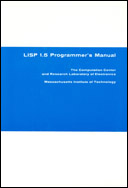Recently I made some long-delayed updates to History of LISP. In the Lisp I/1.5 for IBM 704, 709, 7090 section, I added links to the excellent work by Andru Livisi (here) and Dave Pitts (here) for running LISP on emulators.
In the Other Lisp 1.5 implementations, I added a mention of LISP 1.5 for IBM M44. The M44 was an experimental machine that served as a testbed for some of the earliest virtual machine research.
In the Other Lisps section I added Lisp 1.6 for IBM 1130 (Boston Latin School), which was the first Lisp of Guy L. Steele Jr., who went on to work on MacLisp, Scheme, NIL, Common Lisp, and Connection Machine Lisp. I also added PDP-11 LISP (Massachusetts Institute of Technology), which was the first Lisp of Richard M. Stallman, who went on to work on MacLisp, Lisp Machine Lisp, and Emacs Lisp.
In the Embedded Lisps section I added XLISP.
I made various additions in other sections including Scheme and Common Lisp.

